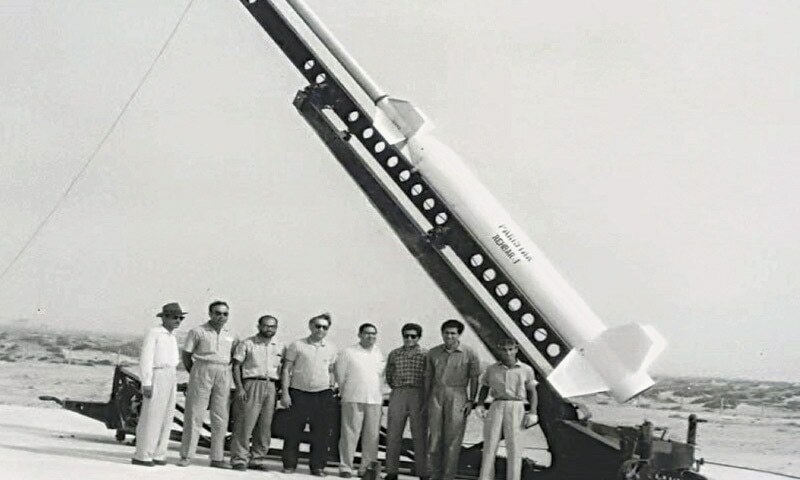Let's explore the reality of the "indigenous" claim repeated ad infintum by Indian government and New Delhi's defense establishment.
News, analysis and opinions about India, Pakistan, US, Canada, Europe, Mid East, South Asia, Silicon Valley, High Technology, Economy, Politics, World

www.riazhaq.com
US-European Origins of Indian Missile Program:
APJ Abul Kalam is credited with designing India's first
satellite launcher SLV3. Its design is virtually identical to the American Scout rocket used in the 1960s. According to the details published in the
Bulletin of Atomic Scientists, Abul Kalam spent four months in training in the United States in 1963-1964. He visited NASA's Langley Research Center in Virginia, where the U.S. Scout rocket was conceived, and the Wallops Island Flight Center on the Virginia coast, where the Scout was being flown. Soon after Abul Kalam's visit, India requested and received detailed technical reports on the Scout's design, which was unclassified.

US Scout and India's SLV3 are both 23 meters long, use four similar solid-fuel stages and "open loop" guidance, and lift a 40-kilogram payload into low earth orbit. The SLV's 30-foot first stage later became the first stage of the Agni.
The United States was followed by others. Between 1963 and 1975, more than 350 U.S., French, Soviet, and British sounding rockets were launched from India's Thumba Range, which the United States helped design. Thumba's first group of Indian engineers had learned rocket launching and range operation in the United States.
India's other missile, the "Prithvi" (earth), which uses a liquid-propelled motor to carry a one-ton payload 150 miles, resembles the widely sold Soviet Scud-B. Indian sources say that the Agni's second stage is a shortened version of the Prithvi, according to Gary Milhollin of the
Wisconsin Project.
France also launched sounding rockets from India, and in the late 1960s allowed India to begin building "Centaure" sounding rockets under license from Sud Aviation.
The aid of the United States and France, however, was quickly surpassed by substantial West German help in the 1970s and 1980s. Germany assisted India in three key missile technologies: guidance, rocket testing, and the use of composite materials. All were supposed to be for the space program, but all were also used for military missiles.
The cryogenic stage used in a recent failed satellite launch by India was a copy of the Russian cryogenic rocket engine and the cryogenic technology transferred to India in the 1990s. According to
Non-proliferation review of 1997, it has emerged that Russia continued transferring rocket engine technology to India in 1993 after its agreements with the United States stop such transfer under MTCR. This reportedly resulted in the completion of 60 to 80 percent of the transfers to India.
North American Origins of India's Nuclear Bomb:
India's nuclear program would not have advanced without a lot of help from Canadians that resulted in Indian copies of Canadian reactors to produce plutonium for its nuclear bombs.
India conducted its first atomic bomb test in 1974. Indians used 40 MW Canadian Cirus reactor and U.S. heavy water both imported under guarantees of peaceful use and used them openly to make plutonium for its 1974 nuclear blast.
In 1972, Canadian-built 100 MWe Rajasthan-1 nuclear power reactor became operational, serving as the model for later unsafeguarded reactors. Another Rajasthan unit started operating in 1980 and two units in 2000. In 1983, India's 170 MW Madras-1, a copy of Canadian Rajhastan-1 reactor, became operational. A second Madras unit followed in 1985. According to the
Risk Report Volume 11 Number 6 (November-December 2005), the heavy water and other advanced materials and equipment for these plants were
smuggled to India from a number of countries, including the USSR, China and Norway, according to
The Bulletin of Atomic Scientists. Some of the firms, such as West German firm Degussa, were caught and fined by the United States for re-exporting to India 95 kg of U.S.-origin beryllium, usable as a neutron reflector in fission bombs.
In May 1998, India conducted two rounds of nuclear weapon tests. Last year, the media
reports indicated that Kasturiranga Santhanam, the coordinator of India's 1998 nuclear tests, went public with allegations that India's Pokhran II test of a thermonuclear bomb in 1998 was actually a fizzle. The device, designed to generate 45 kilotons, yielded an explosion equivalent to only 15 to 20 kilotons of TNT.














